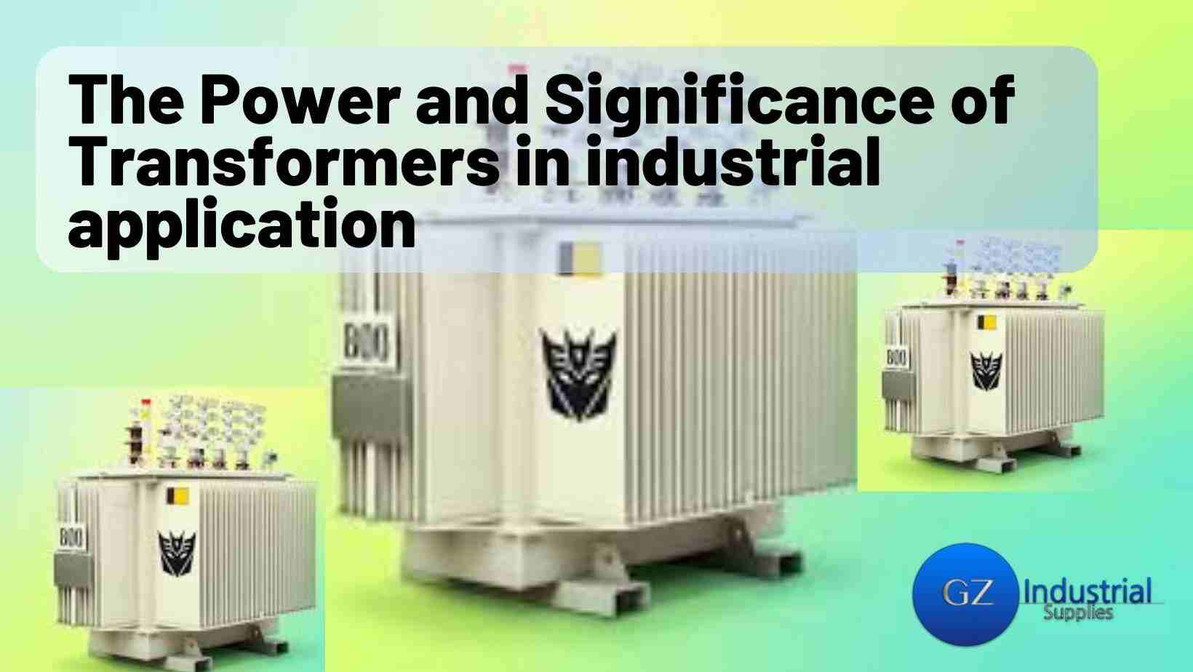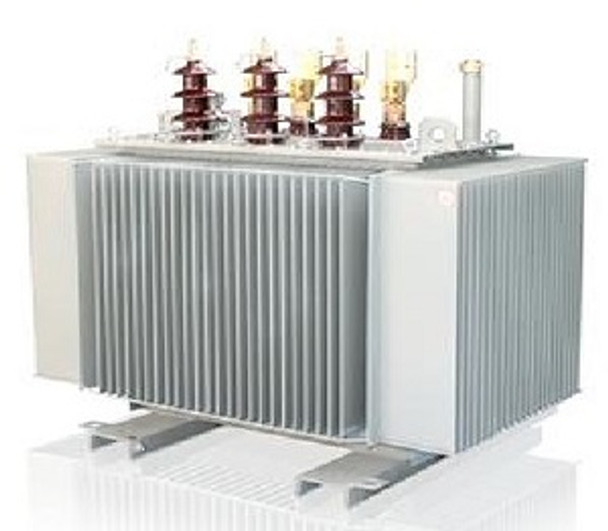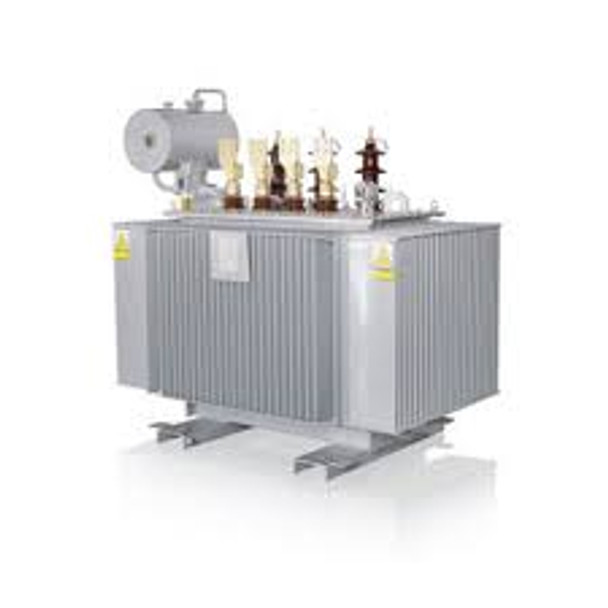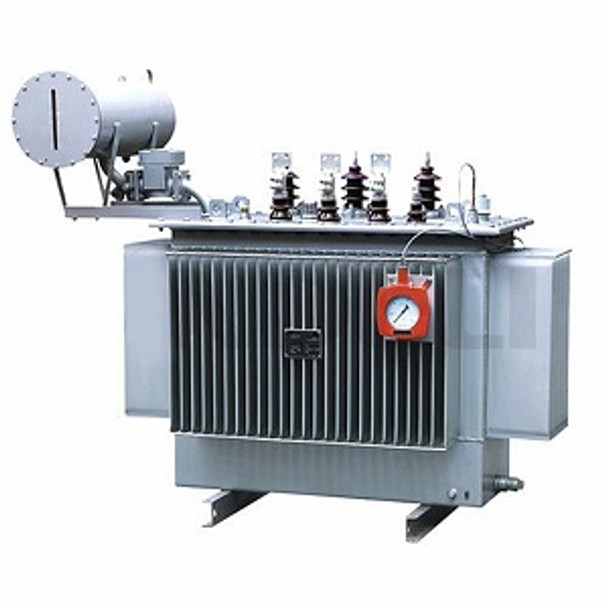The Power and Significance of Transformers in industrial application
Transformers hold a paramount position in the landscape of industrial operations. These crucial devices serve as the unsung heroes of power distribution and management within industrial settings, ensuring the seamless flow of electricity to power the myriad machinery and systems that underpin modern manufacturing and production processes. The significance of transformers in these environments cannot be overstated, as they form the backbone of reliable and efficient electrical systems, ultimately driving productivity, safety, and economic viability.
At the core of industrial operations lies the need for a stable and controllable electrical supply. This necessity arises from the complex machinery, automated systems, and specialized equipment that define the industrial landscape. Transformers act as the linchpin in this process, facilitating the transformation of electrical energy from the grid to levels suitable for industrial machinery. By manipulating voltage levels, transformers ensure that electrical power can be safely and efficiently distributed to various points of use within the facility.
The role of transformers goes beyond mere voltage adjustment. They are instrumental in voltage regulation, harmonics control, and in some cases, even isolation of circuits for enhanced safety. This multifaceted functionality is indispensable in environments where precision, control, and reliability are paramount.
What Are Transformers?
Transformers are devices that transfer electric energy from one alternating-current circuit to another, either increasing or decreasing the voltage level. They work on the principle of electromagnetic induction, which means that a changing current in one coil induces a voltage in another coil that is linked by a magnetic core. Transformers are essential for the transmission and distribution of electric power over long distances, as they can adjust the voltage levels to suit different purposes and reduce power losses.
There are two main types of transformers: step-up and step-down transformers. A step-up transformer increases the output voltage from the primary circuit to the secondary circuit, while a step-down transformer does the opposite. The ratio of the output voltage to the input voltage depends on the number of turns of wire in each coil. A step-up transformer has more turns in the secondary coil than in the primary coil, while a step-down transformer has fewer turns in the secondary coil than in the primary coil.
Step-up transformers are used to raise the voltage level for transmission, as high-voltage power lines can carry more power with less current and resistance losses. Step-down transformers are used to lower the voltage level for distribution and consumption, as low-voltage power lines are safer and cheaper to operate. For example, a power plant may use a step-up transformer to increase the voltage from 11 kV to 220 kV for transmission, and a substation may use a step-down transformer to reduce the voltage from 220 kV to 11 kV for distribution. A household may use another step-down transformer to further reduce the voltage from 11 kV to 230 V or 110 V for domestic appliances.
Power Transformer 100KVA 33/0.415KV
Types of Transformers used in Industries.
There are various types of transformers used in industrial applications, depending on their purpose, design, and construction. Some of the common types of transformers are:
Power transformers: These are large transformers that are used to transmit high-voltage electric power over long distances. They operate at full load and have high efficiency and low losses. They are usually located at power plants, substations, and transmission lines. They can also be used to interconnect different power systems or grids. Power transformers can have multiple windings and taps to adjust the voltage levels according to the load demand. They can also be classified into single-phase or three-phase transformers, depending on the number of phases in the input and output circuits.
Distribution transformers: These are smaller transformers that are used to distribute low-voltage electric power to residential, commercial, and industrial consumers. They operate at varying load conditions and have lower efficiency and higher losses. They are usually located at distribution lines, poles, or underground vaults. They can also be used to isolate different circuits or provide voltage regulation. Distribution transformers usually have two windings and a fixed voltage ratio. They can also be classified into single-phase or three-phase transformers, depending on the number of phases in the input and output circuits.
Isolation transformers: These are special transformers that are used to isolate two circuits from each other, without changing the voltage level. They provide electrical safety, noise reduction, and protection from surges and spikes. They are often used in sensitive electronic devices, medical equipment, and instrumentation. Isolation transformers usually have two windings with the same number of turns and a 1:1 voltage ratio. They can also be classified into single-phase or three-phase transformers, depending on the number of phases in the input and output circuits.
Besides the types of transformers mentioned above, there are also other types that serve specific functions in industrial applications. For example, electric arc furnace transformers are used to supply high currents for metal smelting processes, rectifier transformers are used to convert alternating current (AC) to direct current (DC) for various applications such as electrolysis, welding, and traction, converter transformers are used to connect different AC systems or grids with different frequencies or voltages, and instrument transformers are used to measure and protect high voltage or high current circuits by stepping them down to lower levels. Essentially, based on your type of industrial application, you can select the best suited transformer to carry out the operations efficiently.
Epochem premium Transformer Oil 20 liters
Industrial Applications of Transformers.
Transformers serve as indispensable components in various industries, enabling safe and efficient electrical power management. Here, we'll explore specific examples of how different types of transformers are used across various industrial sectors:
Electrical Power Distribution
In the electrical power distribution sector, power transformers are pivotal for stepping down high-voltage electricity generated at power plants for efficient distribution to homes and businesses. They ensure that electricity is delivered at lower and safer voltage levels. Large industrial complexes and factories often have dedicated power transformers to manage their substantial power requirements.
Manufacturing Industry
Manufacturing facilities rely on distribution transformers to manage power distribution within their operations. These transformers help step down the incoming electrical supply to levels suitable for the machinery and equipment used in the manufacturing process. They are crucial for ensuring a steady and reliable power supply to industrial machinery. Power transformers are also used in various manufacturing processes that require high currents and specific voltages, such as welding, smelting, electrolysis, and induction heating.
Automobile Industry
Isolation transformers play a vital role in the automobile industry, particularly in automotive manufacturing plants. They are used to provide electrical isolation and reduce the risk of electrical noise, thereby safeguarding sensitive electronic equipment, control systems, and computerized machinery used in automotive production lines. Distribution transformers are also used in various applications related to the automobile industry, such as electric vehicles, hybrid vehicles, battery chargers, ignition systems, and sensors.
Electrochemical Industry
The electrochemical industry often involves processes that require precise control of voltage and current. Step-up transformers are utilized to raise the voltage level as needed for specific electrochemical reactions, such as those employed in electroplating, electrodeposition, and electrorefining.
Steel Manufacturing
Steel manufacturing relies on electric arc furnaces (EAFs) for the production of steel. Furnace transformers are crucial in supplying the high currents required for the operation of EAFs. They provide a high-voltage, low-current power supply that's converted to the low-voltage, high-current electricity needed for the furnace's extreme heat and metal-melting processes. Power transformers are also used in steel manufacturing industries that involve melting, refining, casting, rolling, and shaping of steel products.
These are some of the specific examples of how power, distribution, and isolation transformers are used in different industries. They play an important role in ensuring efficient and reliable operation of various industrial processes and systems.
ABB 2500KVA 33.00/0.415KV Distribution Transformer
Benefits of Using the Right Transformer in your Industrial Setting
Selecting and utilizing the right transformers in an industrial setting offers a range of advantages, making them essential components for various applications. Let's explore the benefits:
1. Voltage Regulation:
- Steady Power Supply: The correct transformer helps maintain a stable voltage level, preventing fluctuations or sags that can damage sensitive equipment. This ensures the continuous and reliable operation of machinery and systems.
- Compliance with Equipment Specifications: Many industrial machines and devices have specific voltage requirements. Using the right transformer ensures these requirements are met, preventing damage to the equipment.
2. Electrical Isolation:
- Safety: Transformers provide electrical isolation, reducing the risk of electrical shock or short circuits. This is crucial in environments where workers interact with electrical equipment or in situations where safety is a top priority.
- Noise Reduction: Isolation transformers also help mitigate electrical noise, improving the overall performance of sensitive electronic equipment.
3. Load Management:
- Optimized Energy Consumption: Transformers enable load management by distributing power efficiently. This helps balance the energy distribution, avoiding overloading and ensuring optimal energy consumption.
- Preventing Downtime: By preventing overloads and overvoltage, the right transformers minimize the risk of costly downtime and equipment failures. This is especially critical in industries with continuous production processes.
4. Compatibility:
- Adaptability: The right transformer ensures that power supplied to the industrial setting is compatible with the equipment's voltage and current requirements, promoting seamless operation.
- Facilitates Equipment Integration: In industries with multiple machines and devices, transformers enable the integration of diverse equipment by ensuring their compatibility with the power supply.
5. Improved Equipment Longevity:
- Extended Lifespan: Proper voltage regulation and electrical isolation provided by transformers can significantly extend the lifespan of industrial equipment and reduce the frequency of maintenance and repairs.
6. Energy Efficiency:
- Optimized Power Usage: Using transformers that match the load requirements enhances energy efficiency, reducing power wastage. This is not only environmentally responsible but also cost-effective in the long run.
7. Scalability:
- Facilitates Growth*: The right transformer can adapt to the evolving needs of an industrial setting. It can support the integration of additional equipment or accommodate increased power requirements as the business expands.
8. Enhanced Safety:
- Risk Reduction*: Transformers with built-in safety features minimize the risk of electrical fires, shocks, or equipment damage due to voltage variations, ensuring a safer work environment for employees.
In summary, choosing the right transformers in an industrial setting is a strategic decision that influences efficiency, safety, and equipment performance. The advantages range from optimized energy consumption to enhanced equipment longevity and overall productivity, making transformers indispensable components in various industries.
Buy Sinopec Transformer Oil 200 Liters Drums in Nigeria
Challenges and Importance of Maintaining Transformers
Transformers are critical components in various industries and electrical systems. However, they come with their own set of challenges and require diligent maintenance to ensure optimal performance. Let's delve into the common challenges and the importance of regular maintenance:
Common Challenges:
Overloading: Overloading a transformer beyond its rated capacity can cause overheating and insulation damage, leading to reduced efficiency and potentially catastrophic failures.
Voltage Fluctuations: Voltage surges, sags, or fluctuations in the power supply can impact transformer performance, causing issues with connected equipment.
Insulation Deterioration: Over time, the insulation within a transformer can degrade due to factors like temperature, moisture, or contaminants. This deterioration can lead to decreased performance and even failure.
Oil Contamination: Many transformers use oil for cooling and insulation. Contaminated oil can hinder heat dissipation and lead to overheating and reduced efficiency.
Noise and Vibration: Vibrations and noise can be indicative of loose components or winding issues. Ignoring these signs can lead to further problems.
Corrosion: Corrosion of the transformer tank and components can affect its structural integrity and efficiency. This is especially relevant in outdoor installations.
Power Transformer ABB 300KVA 33.0/415KV
Importance of Regular Maintenance:
Enhanced Efficiency: Regular maintenance, including cleaning, tightening connections, and oil replacement, ensures that the transformer operates at its peak efficiency, reducing energy consumption and costs.
Preventing Failures: Routine checks and maintenance can identify potential issues before they become major problems. This proactive approach helps prevent costly downtime and equipment damage.
Ensuring Safety: Transformers pose electrical and fire hazards if not properly maintained. Regular inspections and maintenance reduce these risks, making the workplace safer for employees.
Prolonged Lifespan: Maintenance practices such as cleaning, oil testing, and insulation checks can significantly extend the transformer's lifespan, protecting your investment.
Compliance with Regulations: Many industries and regions have strict regulations regarding the maintenance of electrical equipment, including transformers. Regular upkeep ensures compliance with these regulations.
Optimizing Performance: Maintenance activities like winding tests and load assessments help fine-tune the transformer's performance, ensuring it meets the specific needs of your operations.
Cost Savings: By addressing issues promptly and maintaining the transformer's efficiency, you can avoid costly emergency repairs and replacements.
Proactive maintenance helps mitigate potential issues, enhance efficiency, ensure safety, and ultimately save costs. It's a wise investment in the performance and longevity of your electrical systems.
Frequently Asked Questions
Q: What are the primary and secondary windings in a transformer?
A: The primary winding is the coil through which the input voltage is applied, while the secondary winding is the coil where the output voltage is induced.
Q: Can transformers work with direct current (DC)?
A: Transformers operate on the principle of electromagnetic induction and require alternating current (AC) to function. They do not work with direct current (DC) without additional electronic components.
Q: What safety precautions should be taken around transformers?
A: Stay away from high-voltage equipment and substations. Only qualified personnel should work on or around transformers, and safety measures should be followed, such as proper grounding and insulation.
Related Articles
What are Power Transformer Voltage Ratings
Where to Buy Power Transformers in Nigeria
Conclusion
Transformers are devices that transfer electric energy from one alternating-current circuit to another, either increasing or decreasing the voltage level. They are essential for the transmission and distribution of electric power over long distances, as they can adjust the voltage levels to suit different purposes and reduce power losses. They are also used in various industrial applications where they have many advantages, such as voltage regulation, electrical isolation, and load management. They can improve the efficiency, safety, and performance of various industrial processes and systems. Transformers can adapt to various industrial applications and environments. They play an important role in ensuring efficient and reliable operation of various industrial processes and systems. Transformers are still relevant and growing in industrial applications today.
However, transformers are not immune to faults and failures, despite their robust design and construction. They can face various challenges in their operation and to overcome these challenges and ensure optimal operation of transformers, regular maintenance and monitoring are essential. Regular maintenance and monitoring can help prevent costly downtime and repairs by detecting and diagnosing problems early before they escalate into faults or failures. To learn more about Transformers, especially with regards to industrial applications, Contact Us Today.
Recent Posts
-
Agricultural Sprayer and its uses
Introduction Agricultural sprayers are a special type of farm equipment used for applying liquid sub …Apr 25, 2025 -
Why Serious Mechanics Are Switching to Japanese-Made Shinano Air Tools
Japanese-Made Shinano Air Tools Key takeaway: Shinano’s tight-tolerance, twin-hammer designs d …Apr 24, 2025 -
Top 10 Hand Tool Brands for Professionals
Introduction When it comes to professional hand tools, quality, durability, and reliability are para …Apr 23, 2025










